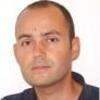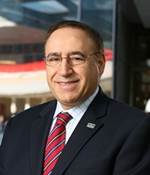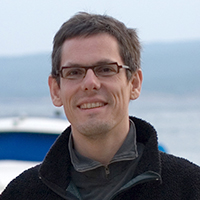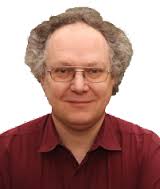- Home
- Objective
- Keynote Speakers
Mohamad Sawan Canada Research Chair in Smart Medical Devices Polystim Neurotechnologies Laboratory Polytechnique Montreal, Canada
Prof. Mohamad Sawan
Fabrice Wendling (PhD) holds a position of Director of Research at INSERM

Prof. fabrice Wendling
Metin Akay is currently the founding chair of the new Biomedical Engineering Department and the John S. Dunn professor of biomedical engineering at the University of Houston

Prof. Miten AKAY
Bart Bijnens

Prof. Bart Bijnens
ICREA Research Professor in the Department of Information and Communication Technologies at Universitat Pompeu Fabra (UPF)
Patrick Flandrin

Prof. Patrick Flandrin
CNRS "Research Director" at École normale supérieure de Lyon
Ghaleb Husseini Professor- AUS Chemical Eng. Department, Sharjah, UAE
 Prof. Ghaleb Husseini
Prof. Ghaleb Husseini
Peter Stadler Algorithms, Computing in Mathematics, Natural Science, Engineering and Medicine, Bioinformatics University of Leipzig ,
 Prof. Peter Stadler
Prof. Peter Stadler- Invited Speakers
- Partner Universities
- Lebanese University, LU, LB
- Beirut Arab University, BAU, LB
- Notre Dame University, NDU, LB
- Rafic Hariri University, RHU, LB
- Islamic Univ. of Lebanon,IUL, LB
- Saint Esprit of Kaslic Univ. USEK, LB
- More...
- Modality and submission
Paper presentation and submission

The conference will consist of oral presentations of fifteen minutes with few plenary sessions. All submitted papers will be peer reviewed. Accepted papers will be published as a collective work in an electronic format and will be submitted for inclusion to IEEE Xplore
 Patrick Flandrin
Patrick Flandrin CNRS "Research Director" at École normale supérieure de Lyon
Title:A time-frequency perspective on biosonar signals
Abstract:
Bats are a paradigmatic example of « biosonar ». The bioacoustic active navigation system they use may be thought of as very similar to man-made ones, and its study presents a twofold interest: on the one hand, it may be viewed as a laboratory for understanding natural behaviors at the light of communication theory; on the other hand, it may serve as a successful guide for the development of bio-inspired systems. The observation of bat echolocation signals evidences that they consist of highly structured, ultrasonic, broadband, transient chirps, thus calling for a time-frequency description that naturally matches their nonstationary nature and allows for efficient descriptions as well as simple interpretations. It will be shown that considering biosonar signals from a time-frequency perspective easily permits to assess their performance, to discuss how close they are from optimality (with adaptation to multiple tasks such as detection, estimation, recognition, interference rejection,…), and to propose justifications for some observed robustness properties in connection with filterbank cochlear modeling. Besides biosonar issues per se, bat chirps will give an opportunity to review recent developments in data-driven time-frequency methods that are particularly well-suited to their analysis.
Biography:Patrick Flandrin graduated from ICPI Lyon (Engineer Degree in 1978) and INPG Grenoble (PhD in 1982 and "Doctorat d'État ès Sciences Physiques" in 1987). He is currently a CNRS "Research Director" at École normale supérieure de Lyon. His research interests are mostly in nonstationary signal processing (time-frequency/time-scale methods), scaling stochastic processes and complex systems. He published over 250 journal or conference papers in those areas, contributed several chapters to collective books and authored one monograph. Former Director of CNRS-GdR ISIS (2002-2005), he is President of GRETSI, the French Association for Signal and Image Processing, since 2009. Dr Flandrin has been awarded the Philip Morris Scientific Prize in Mathematics (1991), the SPIE Wavelet Pioneer Award (2001), the Prix Michel Monpetit from the French Academy of Sciences (2001) and the Silver Medal from CNRS (2010). Past Distinguished Lecturer of the IEEE Signal Processing Society (2010-2011), he is a Fellow of IEEE (2002) and of EURASIP (2009), and he has been elected member of the French Academy of sciences in 2010.
More at http://perso.ens-lyon.fr/patrick.flandrin
- Keynote Speakers









 Mohamad Sawan
Mohamad Sawan